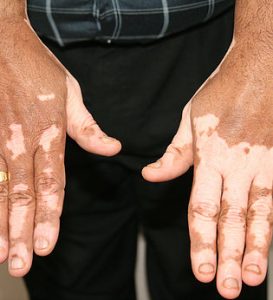The disease ‘Vitiligo’ is commonly known even outside non-medical circles. The reason being its symptoms and complexities affect one not only physically, but also psychologically. Put in simple language, Vitiligo is a condition where the melanocytes, or the pigment that gives each of us its unique colour, is destroyed, leaving patches which are ‘depigmented’ or white.
The condition affects a lot of people around the world. Those who usually have dark-coloured skin are affected the most, as the skin tone is ruined and the white patches are much more visible. Vitiligo can both be focal and localized; often, a misdiagnosis of Albinism or Leucoderma is made. However, Leukoderma cream does not affect this condition.
So, what causes Vitiligo, what are its treatments, and can it be prevented? Read on.
What causes Vitiligo?
The exact cause of Vitiligo is still not known. Experts have varying opinions on it. What is agreed upon is that Vitiligo is an autoimmune disease. Such diseases happen when the body’s immune system affects parts of the body itself, for reasons unknown. Lupus, Multiple Sclerosis and Ankylosing spondylitis are all autoimmune diseases.
Most people who have Vitiligo contract it at less than 20 years of age. Occurrences in people above 40 are extremely rare. Vitiligo may often be genetic in condition and may have certain underlying conditions like thyroid gland malfunction. Some of the institutes which offer the best Vitiligo treatment in India look first for any subliminal abnormalities before they start looking at treatment options.
Vitiligo occurrence is independent of race or gender. There are no exact figures on how many people have the condition, however.
The most common symptoms of Vitiligo
The most common symptoms of Vitiligo are white patches on the face, armpits and groin, the arms, around the eyes and the face, and in the genital area. People with Vitiligo often see a rapid progression in greying of hair. Sometimes, the inside of an affected person’s mouth also suffers from a lack of pigmentation, and hence, colour.
There is no way to determine whether Vitiligo will remain confined to one area or will migrate to other regions of a body.
A biopsy, an eye exam and some minor blood tests are carried out to determine the presence of Vitiligo. It is not a contagious disease though.
Treating Vitiligo
Treating Vitiligo consists of 4 primary methods: surgical intervention, oral medications, avoiding exposure to sunlight, and hence UV radiation, and depigmenting the unaffected areas so that the skin tone remains uniform. Many people use Vitiligo makeup to conceal the affected areas, especially if the face and neck regions are affected.
Grafting skin from one’s own body and implanting it on affected areas work better than cosmetic treatments like Leukoderma cream. However, this grafting is a surgical avenue of treatment and is costly.
People often tattoo afflicted areas, especially if the skin patch is small in size. Sunscreens work in instances, but they cannot treat Vitiligo on their own.
Physicians recommend that more than external treatment, people with Vitiligo need counselling and lessons on self-condition. Patients must realise that there is nothing wrong with this condition. At the moment, leading scientists are working in tandem to determine precisely which genes malfunction and cause Vitiligo. Once empirical results emerge, treatments will undoubtedly be more comprehensive than an average, OTC Leukoderma cream, for example.
